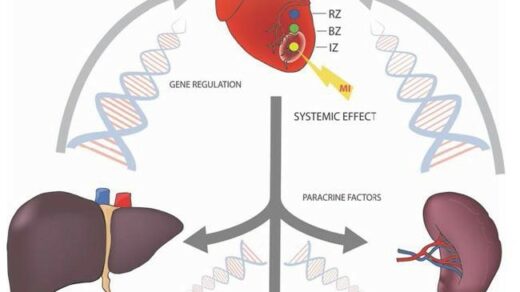“Currently, there is no effective therapy for CRPC.“
Prostate cancer is the second most diagnosed cancer among men worldwide and remains a leading cause of cancer-related death. While early forms of the disease can usually be treated successfully, advanced cases remain a major challenge. Scientists have now discovered a new potential way to slow the growth of advanced, treatment-resistant prostate cancer. These results were recently published in Volume 16 of Oncotarget by researchers from the University of Cincinnati College of Medicine.
Understanding Advanced Prostate Cancer
Early-stage prostate cancer can often be treated successfully. Most treatments work by lowering testosterone levels or blocking the hormone from activating the androgen receptor (AR), which drives cancer growth.
In some patients, however, the disease progresses to castration-resistant prostate cancer (CRPC). Even with drastic reductions in testosterone levels, the tumors continue to grow at this stage. CRPC is much more difficult to treat, and current therapies such as hormone blockers or chemotherapy typically extend life by only a few months.
One reason for this resistance is that cancer cells often switch to a different form of the androgen receptor called AR-V7. This variant remains permanently active, even without testosterone, making hormone-based drugs less effective. Because of this, new treatment strategies that work independently of hormone levels are needed.
The Study: Targeting a New Weakness in Prostate Cancer Cells
In the study titled “Targeting PCNA/AR interaction inhibits AR-mediated signaling in castration resistant prostate cancer cells,” researchers Shan Lu and Zhongyun Dong from the University of Cincinnati College of Medicine investigated a new way to block CRPC growth.
They focused on an unexpected partnership between two proteins. One is the AR, the key driver of prostate cancer. The other is proliferating cell nuclear antigen (PCNA), a protein known for helping cells repair their DNA and grow.
The goal was to block the connection between AR and PCNA. To do so, researchers carried out experiments on several types of prostate cancer cell models: LNCaP cells (which express the full-length AR), 22Rv1 cells (which express both full-length AR and the resistant AR-V7 variant), R1-D567 cells (which express another AR variant), and PC-3 cells (which do not express AR and were used as a control).
The Results: Blocking PCNA Slows Prostate Cancer Cell Growth
The researchers discovered that PCNA binds to AR in two specific regions. In normal AR, testosterone strengthens this binding, but in the AR-V7 variant, the binding constantly happens, regardless of testosterone levels.
To break this link, the team designed a small peptide called R9-AR-PIP. This peptide places itself between AR and PCNA, preventing them from connecting. Once separated, AR could no longer attach to DNA or activate genes that promote prostate cancer growth, such as PSA and cyclin A2. As a result, cancer cell proliferation decreases, and cell death increases.
Researchers also tested another small molecule called PCNA-I1S, which blocks PCNA from entering the cell nucleus. This molecule produced similar effects as R9-AR-PIP, reducing AR activity, including the resistant AR-V7 form.
One key finding was that both small molecule treatments lowered the levels of cyclin A2, a protein often overproduced in CRPC and associated with poor outcomes.
Implications for Advanced Prostate Cancer Treatment
This study is the first to show that blocking the PCNA–AR partnership, either by blocking their direct interaction or by preventing PCNA from entering the nucleus, can slow the growth of prostate cancer cells, including those driven by AR-V7. Unlike current treatments, these approaches target the interaction itself rather than testosterone.
If developed into a clinical therapy, it could open a new path for treating late-stage prostate cancer, particularly for patients whose cancer no longer responds to hormone therapy. It also offers a way to slow cancer growth without the heavy side effects of chemotherapy.
Future Perspectives and Conclusion
These new findings are currently only available in preclinical studies. The next step will be to test these PCNA-targeting compounds in animal models and, eventually, in clinical trials. If successful, this strategy could lead to a new generation of treatments for advanced prostate cancer, even in cases that have become resistant to all current therapeutic options.
Click here to read the full research paper in Oncotarget.
_______
Oncotarget is an open-access, peer-reviewed journal that has published primarily oncology-focused research papers since 2010. These papers are available to readers (at no cost and free of subscription barriers) in a continuous publishing format at Oncotarget.com.
Oncotarget is indexed and archived by PubMed/Medline, PubMed Central, Scopus, EMBASE, META (Chan Zuckerberg Initiative) (2018-2022), and Dimensions (Digital Science).
Click here to subscribe to Oncotarget publication updates.
For media inquiries, please contact media@impactjournals.com.



